What are the skis and how to choose them?
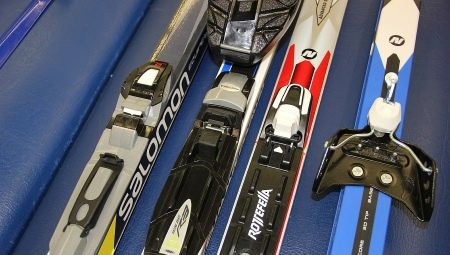
Finding equipment that will fully satisfy the skier is not an easy task. There are many factors to consider: fitness level, riding style, athlete's body weight and height, and the condition of the track. Skis are walking, sports, carving, for freeriding and other techniques, they are made of plastic and wood. In the article, we will take a closer look at the main points of choosing skis.
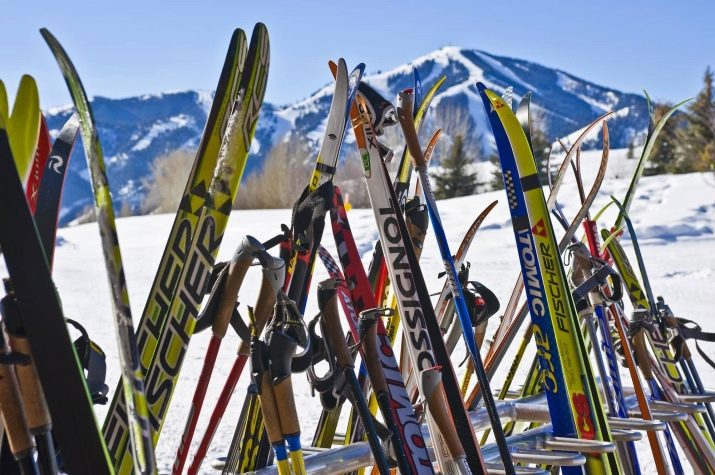
What it is?
Skis are a device in the form of long runners for movement on snow. Modern skis for an athlete look like a pair of bars with a length of 150-220 cm. They have pointed and curved toes and are made of wood or plastic. The movement on such devices allows you to easily and quickly slide on the snow cover.
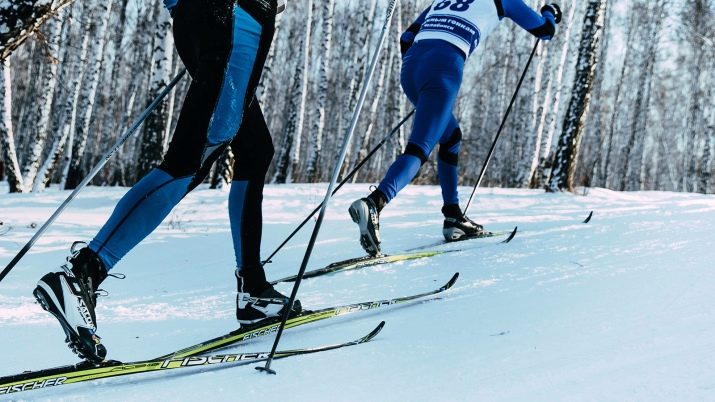
In addition, skis are widely used on air and snowmobiles.
First, a little history. According to archaeologists, people used devices that resemble modern skis 5-6 thousand years ago. Our ancient ancestors put them on their feet to move on deep snow coverings and unstable ground, as well as when hunting forest animals. The skis made it easier to slide and significantly accelerated the pursuit of prey.

Archaeologists have found rock paintings, which directly indicated that the most ancient people "put on shoes" boards to overcome the snow-covered paths. The earliest evidence is from what is now Norway. This suggests that the history of the very first skis goes back to the northern lands.
However, not all researchers agree with this theory. Some believe that skis were created in ancient Asia, according to third sources, the emergence of skis is associated with European tribes. However, it cannot be ruled out that the beginning of the operation of ski equipment fell on approximately the same time in all corners of the globe. Thus, there are no exact dates and places where the prototype of modern skis originated. It can only be argued that the main goal of their invention in ancient times was survival in difficult natural conditions.

Of course, since then, ski production technology has undergone major changes. These days, activities to optimize maneuverability, lighten weight, find the optimal configuration and material are ongoing. Today skis are made mainly of carbon fiber - this is a lightweight and practical raw material. For the core of a sports structure, in most cases wood is used - ash, maple or poplar.
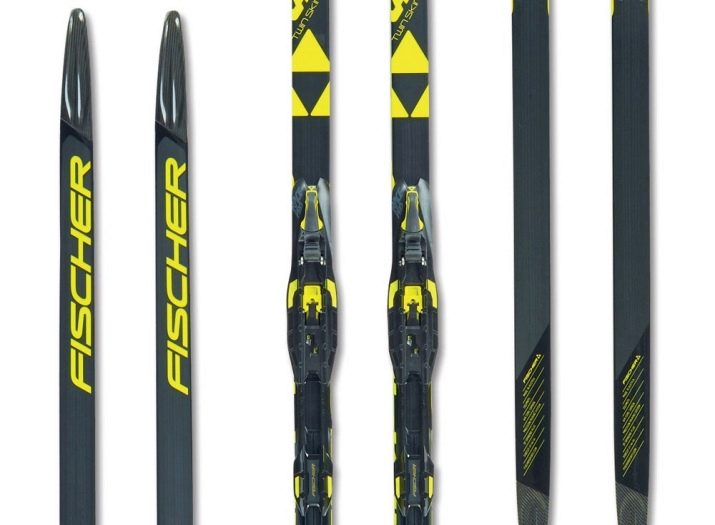
The main component is fiberglass. The sliding base is made of polyethylene. Titanium is used to increase rigidity and improve the smoothness of the equipment.

It is a metal alloy based on aluminum and titanium, it is distinguished by its strength, wear resistance and durability.
Species overview
There are no universal ski options these days. Depending on the specific conditions and purpose of operation, different models are being developed, each of them has its own differences in shape, weight and other technical characteristics.
By appointment
Depending on what type of surface the skis are intended for moving on, the whole variety of the presented models is divided into:
-
mountain - for driving on snowy slopes;
-
cross-country - for moving on a snow-covered plain.
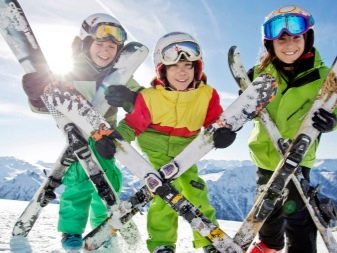
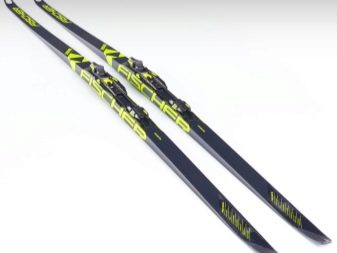
All types of skis are available in both adults and children. Children's models are intended for use by young athletes from the age of 3 years. When they reach the age of 14, you can switch to adult equipment.
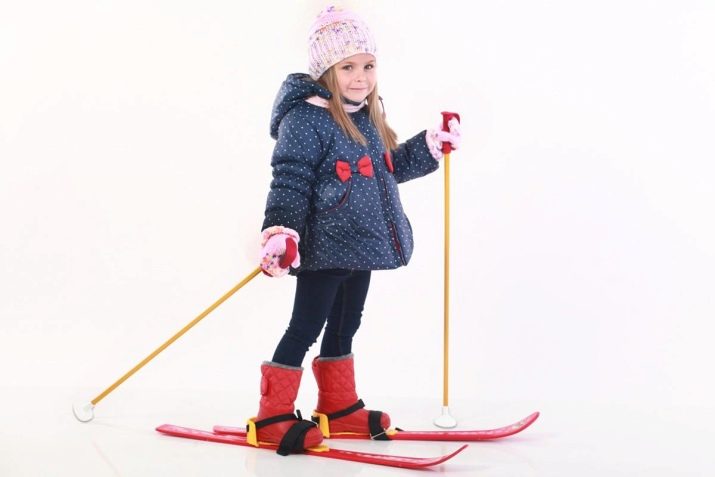
And also skis are divided into amateur and sports. To learn the basics of riding, amateur models are used - they are distinguished by low rigidity, they are easier to control. For professional activities, preference should be given to sports.
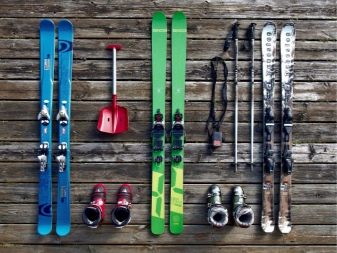
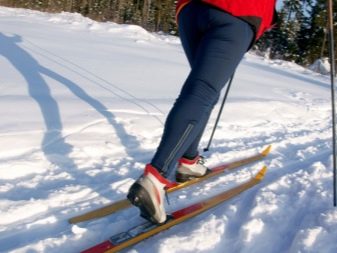
By riding style
Cross-country skiing can be divided into four categories based on your riding style.
Classic. This type of equipment is in demand for moving along a smooth, pre-equipped track. The skis are parallel to each other during the ride. The degree of rigidity of the products is low, notches are applied in the middle - this ensures maximum adhesion of the working unit to the snow floor. The boards are elongated - 205-210 cm, the toe is sharp.
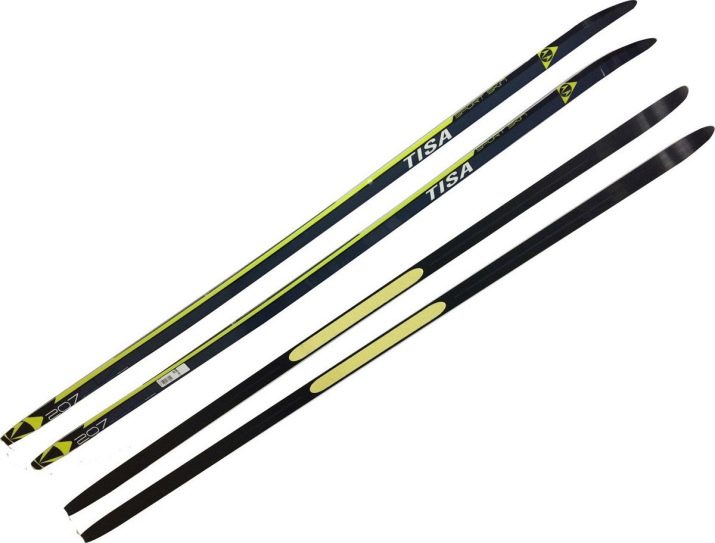
For skating. They are in demand when driving on a flat surface, such a move from the side resembles the movement of an athlete-skater. In this case, there should be no adhesion between the snow cover and the ski chassis. This characteristic is achieved due to the increased rigidity and narrower waist of the products. Riding equipment is slightly shorter than running equipment, its length is 190 cm.

For a good kick, the design provides a piping on the bottom block and a blunt toe.
Combined. They belong to a universal group, they are suitable for both classic and skating styles. The length does not exceed 200 cm, so when using the skating style, socks do not interfere with movement.

For lovers of extreme sensations, Backcountry equipment is produced. They are relevant when conducting hiking trips of varying degrees of difficulty, including over rough terrain, where there are no flat areas or specialized trails. This design is distinguished by high rigidity due to metal edging, multi-layer, as well as a wide working surface. Produced mainly on order.
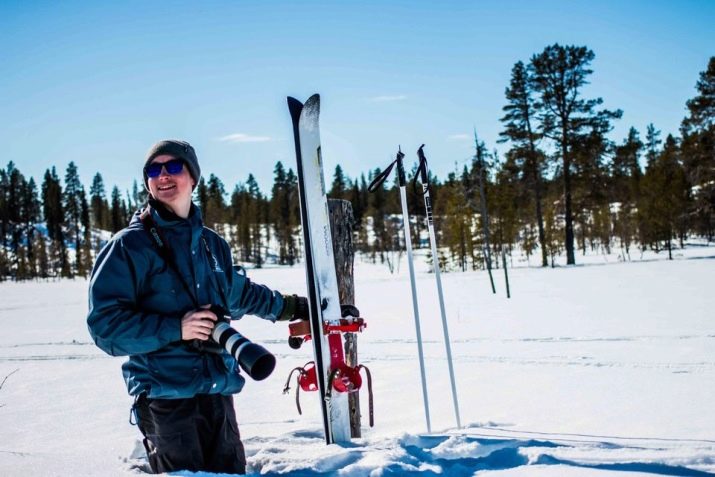
The main types of alpine skiing.
Universal - the most popular among the majority of athletes.They are used for driving on various types of mountain slopes: both prepared and not. The design of the station wagons is characterized by relatively low rigidity, a slightly widened waist, and also a front bend. Thanks to this structure, they become as maneuverable and easy to control as possible.

Piste - found application for downhill skiing on previously prepared tracks. These models are stiffer and narrower at the waist, this is their main difference from the universal ones.
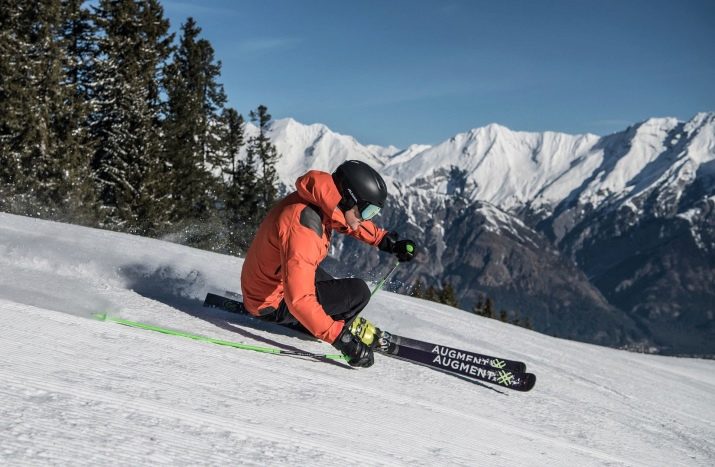
Trail carving - unite a large group of equipment (short, medium and long radius). The larger the sidecut of these skis, the higher the radius of the arc. Accordingly, the higher the driving speed can be achieved.

There are special series of equipment:
-
freeride - in demand on unequipped slopes;
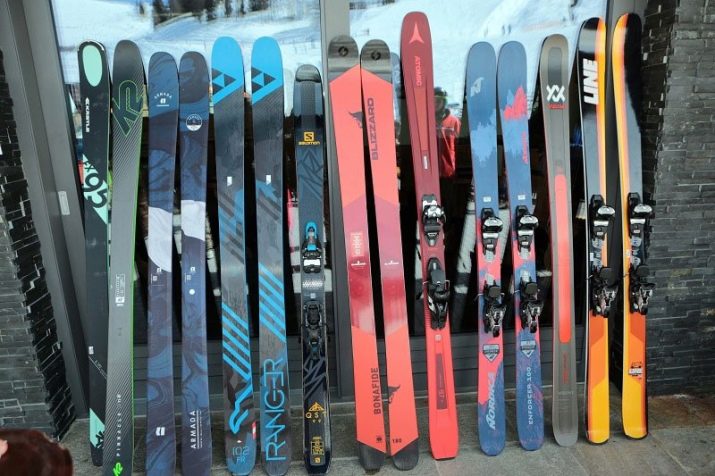
- park and pipe - allow you to move forward with your back;
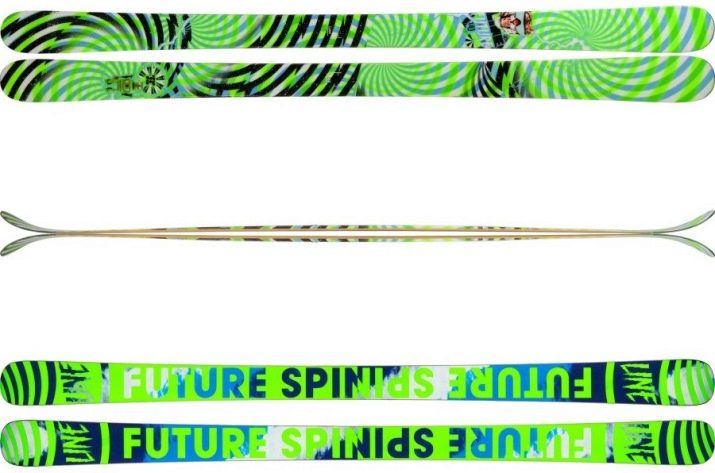
- freestyle - designed to perform elements of dance and acrobatics;
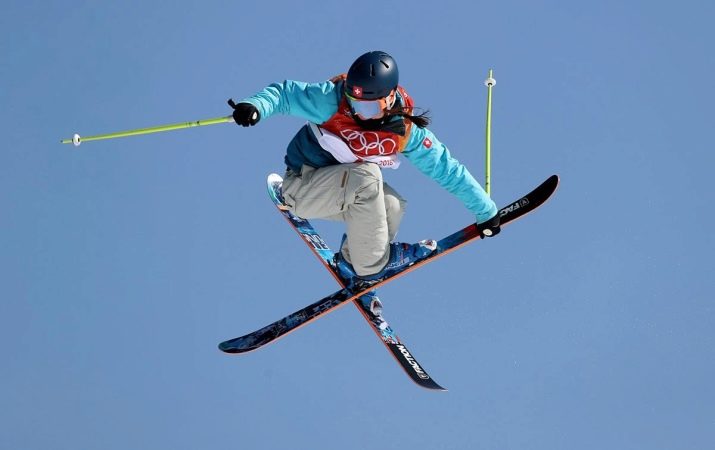
-
powder - the widest possible models, securely hold the athlete on a soft snow cover;
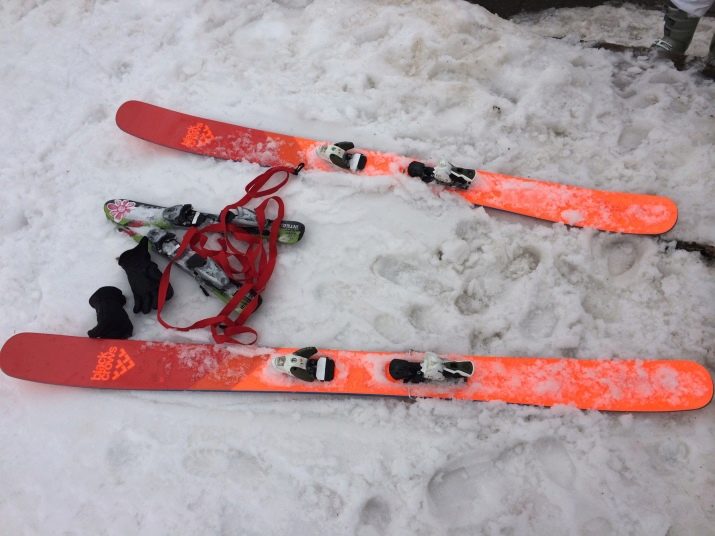
- racing - used for fast descent, slalom and giant slalom.
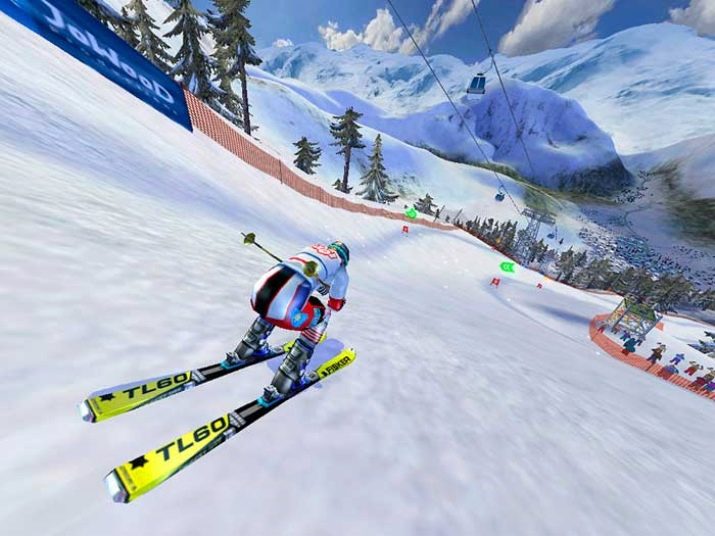
By the level of preparation
An important factor in the choice of skis is the classification according to the level of technical readiness of the athlete. According to this criterion, all equipment can be divided into four main groups.
A - for skiers-athletes with good training both in terms of riding technique and physically.
B - for experienced skiers who intend to improve their skills.
C - relevant for children and adults who already have riding skills.
D - the most popular type of ski, allows beginners to ski with ease, who just got on skis.

The higher the class of ski equipment, the higher its cost. In the free sale in stores there are products of classes B, C, and D. Skis of group A can be obtained exclusively by individual order.
Top manufacturers
When choosing a ski manufacturer, it is advisable to focus on well-known brands. In the manufacture of equipment, they use the most advanced technologies, and to reduce the weight of products they use the highest quality material. This allows for easy and fast sliding on the track. The rating of the most popular companies includes several well-known brands.
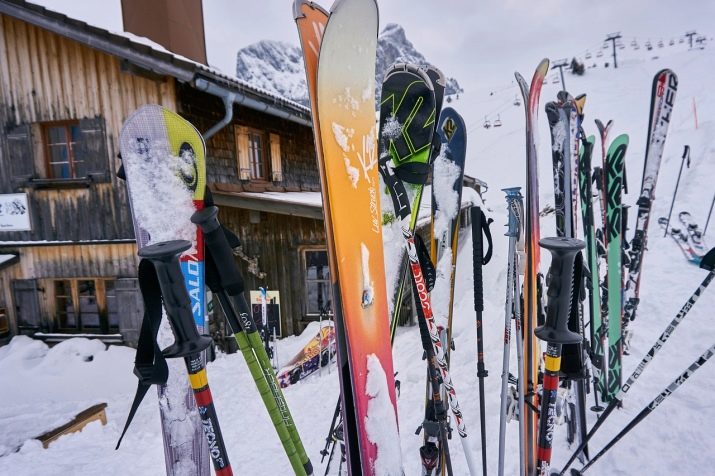
Fischer - manufacturer from Austria, known for its premium equipment. It is famous for its optimal combination of price and quality.

Atomic Is another Austrian manufacturer. It holds a leading position in the alpine skiing segment. Produces a wide range of skis for beginners.
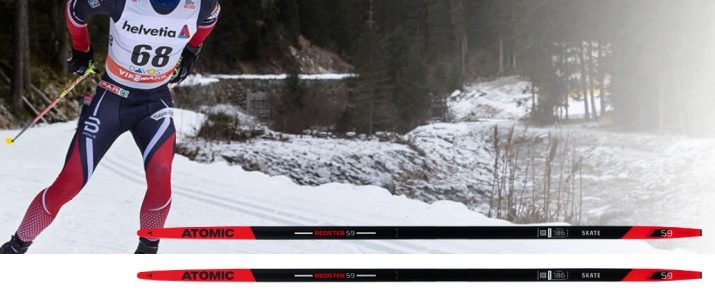
Salomon Is a French brand specializing in the production of premium cross-country skis. Has earned a reputation as the best manufacturer of women's equipment sets.
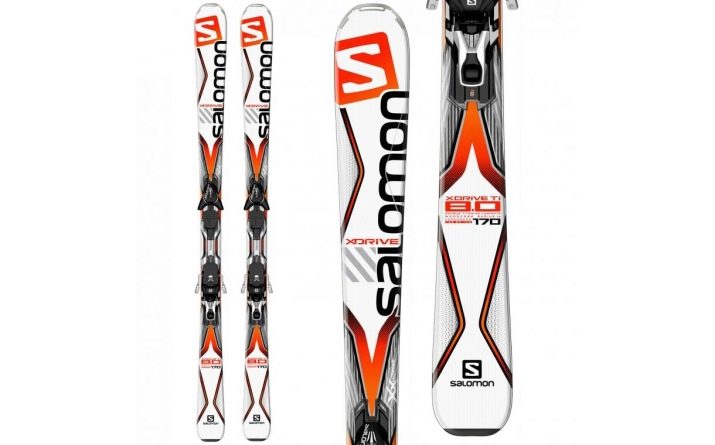
Components
The set of skis includes components - washer, Velcro, ties, holder, stand, knurls, stand, scraper. The success of skiing largely depends on their quality, especially when it comes to sticks. Thanks to them, the skier feels feedback from the snow slope, receives information about the condition of the snow cover at each specific moment in time.
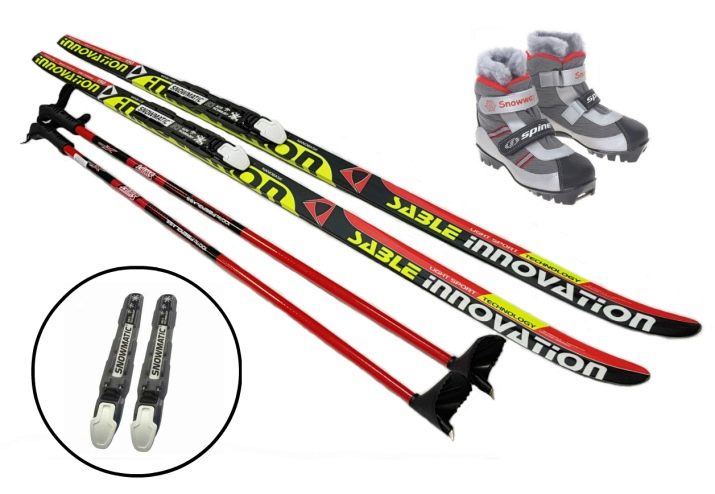
Sticks help maintain balance and, if necessary, correct a critical situation.
Overly long or weighted poles are rather clumsy while riding, and short ones will not be able to provide optimal balance when riding. High-quality poles should be as strong as possible to provide the necessary support and at the same time remain light so that the athlete's hands do not get too tired. Manufacturers offer several types of ski poles.
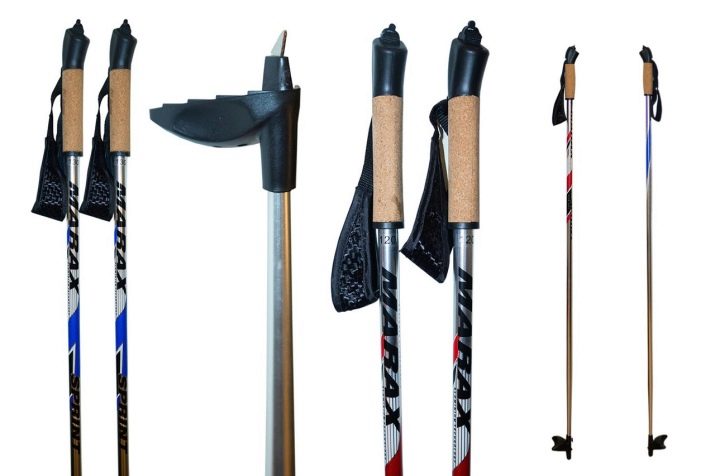
Universal - designed for skiing on prepared tracks and all-mountain, that is, in almost any conditions. The shaft of such sticks is straight, the ring is small.

For competition - such poles are distinguished by a curved shaft, it ensures maximum compliance with the special requirements of ski disciplines: slalom, super giant, as well as downhill. The ring of such products is small, streamlined in shape.

For virgin lands and long descents - these poles are optimal for driving on deep loose snow. Their distinctive feature is the large diameter rings, thanks to which the athlete feels support even on soft flooring. In addition, the shaft of such sticks is increased, this allows them to withstand blows against stones and trees.

Be sure to get a ski and pole cover to protect your hands and clothing from contact with grease. Special attention should be paid to the selection of ski goggles - during skiing, they will serve the skier a good service. They will protect it from the bright sunlight reflected from the white snow. In addition, during the descent, due to the strong wind blowing right in the face, the eyes begin to watery - this is fraught with a loss of control over the situation and, as a result, the risk of falling and colliding with obstacles. Glasses allow you to prevent this situation.
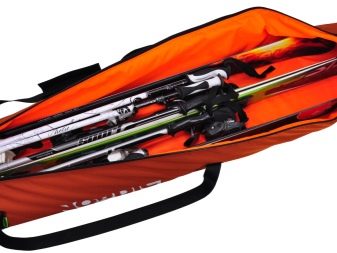
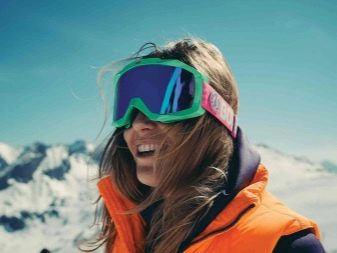
How to choose skis?
When choosing skis, it is important to comprehensively approach this issue. There are many criteria influencing the ride quality. Keep in mind - you shouldn't save on skis. Get the highest quality model possible and as expensive as your budget goes, especially if you intend to go to the ski slope in the future.

If you ski quickly and confidently, then most likely you know how to choose the right model for your needs. Beginners should first decide where they are going to ride, for what purpose and in what technique. The fact is that not every park has a well-prepared track for skating, but a well-trodden track is found everywhere: you can safely ride around the city or around local ponds.
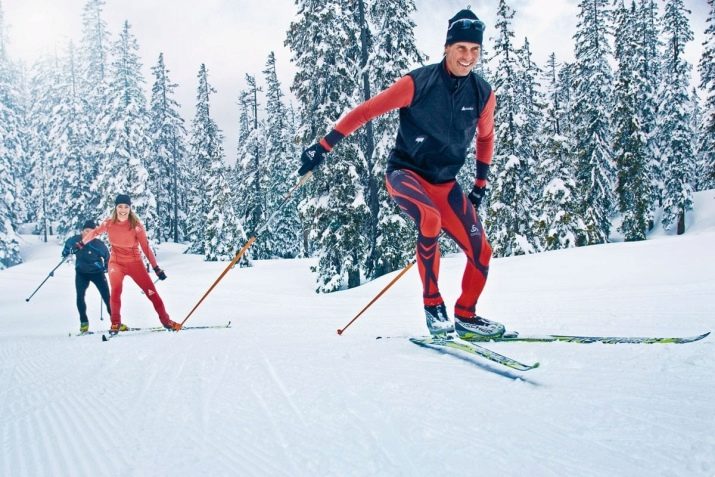
For rare use, buy classics; for regular and serious practice, it is better to opt for skate models.
Alternatively, you can take combined equipment. This will allow you to alternate the classics with the skating course. In this case, it is better to purchase an oil-free option: the skis will not need to be lubricated so that they do not roll back. In the process of skiing, this will allow, if necessary, to stop, take a break, and then climb the mountain without much effort.
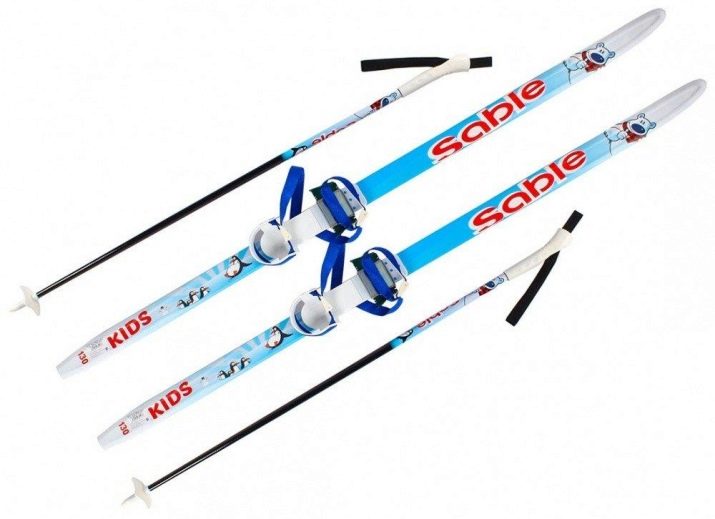
It is important that the skis are perfectly flat, with a smooth surface. No damage, bulges or cracks are allowed. High-quality products are compressed equally and evenly when pressed. If one ski squeezes harder than the other, this is an excuse to skip the purchase.
When choosing the optimal model, one should be guided by the user's anthropometric parameters. When buying classic models, you should add 20-30 cm to the height, ridge models should be 10-15 cm longer, combined models by 15-20 cm. Ski poles should also be selected by height: for classic and combined products, they should be lower by 25-30 cm, for skating - 15-20 cm. On the surface of any ski there must be a marking, which contains data on the conformity of the equipment to the weight and dimensions of the athlete.
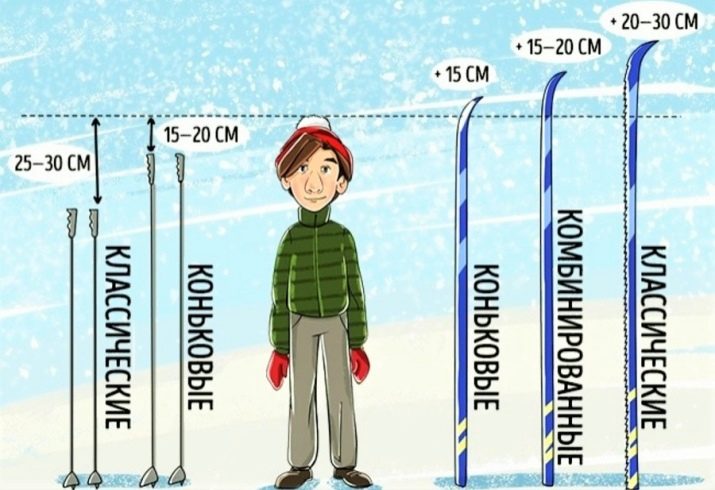
There are some peculiarities when choosing alpine skis. Driving on such a track is inextricably linked with high speed and stunts. Therefore, such skis are usually chosen by those who plan to increase physical activity or try something more extreme. The inventory should be selected individually, without focusing on the advice of friends and bloggers.
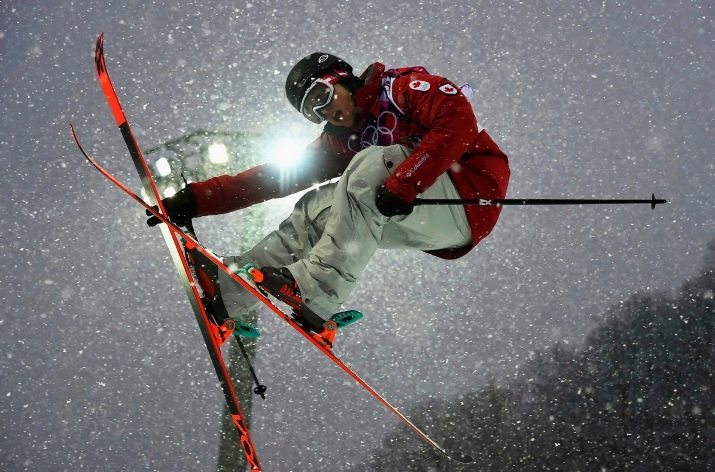
First, decide on the level of athletic training: beginner, advanced or professional.
Next, it is important to establish which riding style is preferable: on any slopes, on equipped tracks with fresh and artificial snow, freeriding or performing tricks.
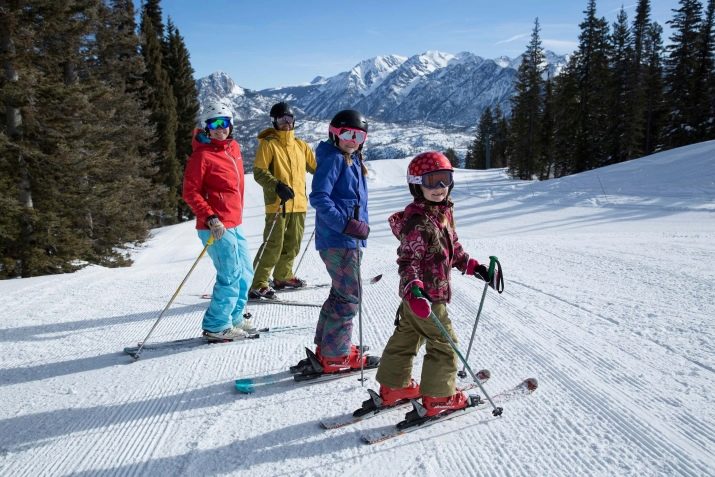
In terms of hardness, mountain skis can be soft and hard. The first is the best choice for beginners who prefer quiet riding. The latter will be appropriate for confident skiers who are able to roll at higher speeds.
And also decide what rolling radius you need: the smaller it is, the sharper turns you can make. At the same time, a larger radius provides a confident ride at high speeds.

Novice athletes usually opt for short arcs within 11-14 m, professionals start from 15 m and more.
To choose skis based on your height, you need to stand next to them: they should end approximately between the chin and the crown of the head. At the same time, sports equipment with a length closer to the chin is suitable for beginner skiers and intermediate athletes. The longer model will appeal to extremists who ride along the mountain slopes quickly and in long arcs.
Additionally, manufacturers produce models for women: they are slightly lighter, shorter and softer. Such skis are made from lightweight material, their performance parameters are selected taking into account the anatomical features of the female body. However, this does not negate the fact that athletes can safely ride on universal equipment designed for men.
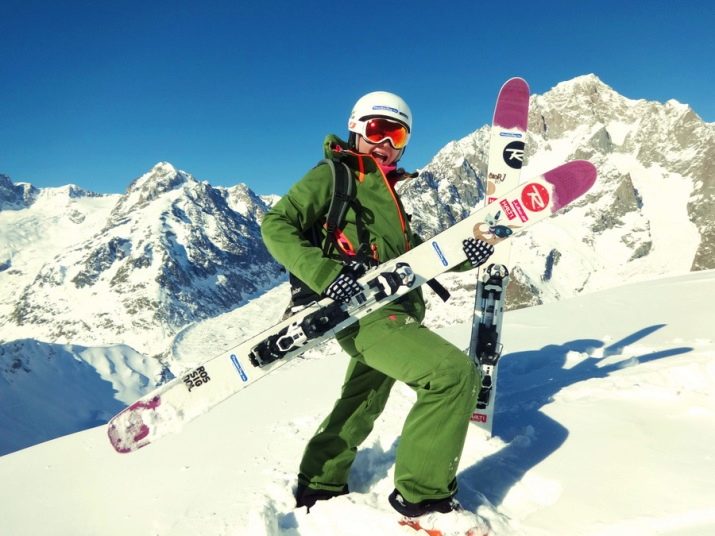
Care rules
As with all sports equipment, skis wear out with use. However, with proper care of your equipment, you can effortlessly extend the lifespan of your skis. The instruction is simple.
Immediately after purchasing the skis, you need to thoroughly wash the surface, thoroughly cleaning the surface from the remnants of paraffin, with which the manufacturers rub it to protect it from damage during transportation. You should not neglect this measure, since the coating has managed to absorb all the dirt and dust, which deteriorate the quality of the sliding surface of the skis.
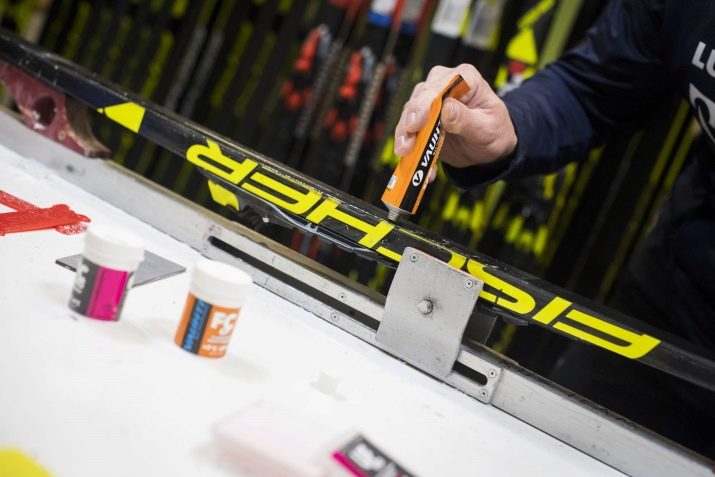
Washes or solvents will be most effective.
When transporting skis, do not cross them - use special Velcro for the bundle, as well as protective covers.
It is better to keep skis in a heated room, but at the same time away from radiators and other heating devices.
Do not store skis in the cold, especially if water gets into the mounts while riding. In this case, when the liquid freezes, they can crack.
Avoid exposing your skis to direct sunlight.
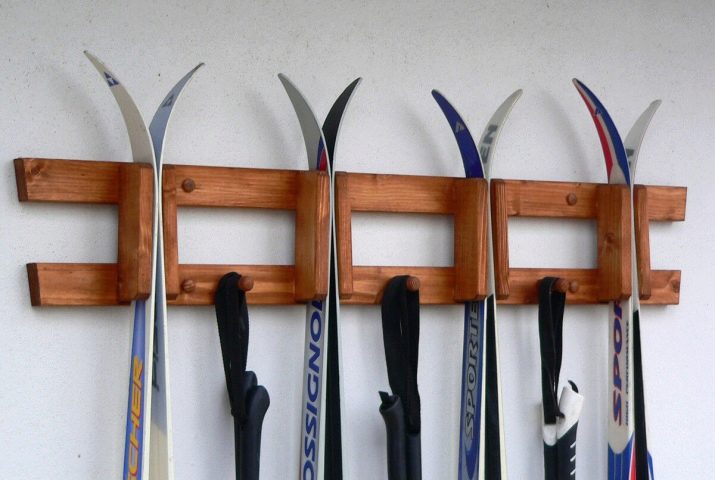
Periodically inspect sports equipment for mechanical damage. Pay special attention to the sliding surface and edge sharpness parameters. Any irregularities, chips or burrs indicate the need for sharpening. To do this, you need to contact a specialized workshop or independently process the edges with a file or canto cutter.
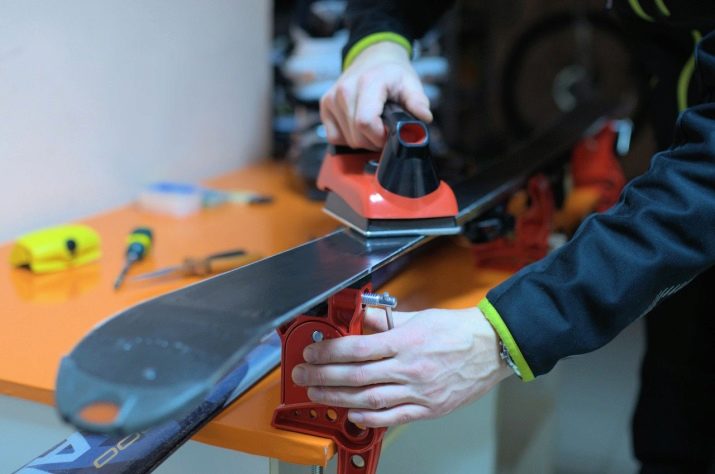
After sharpening, the edges must be carefully polished with a diamond polishing stone, a ceramic polishing stone or an abrasive polishing stone.
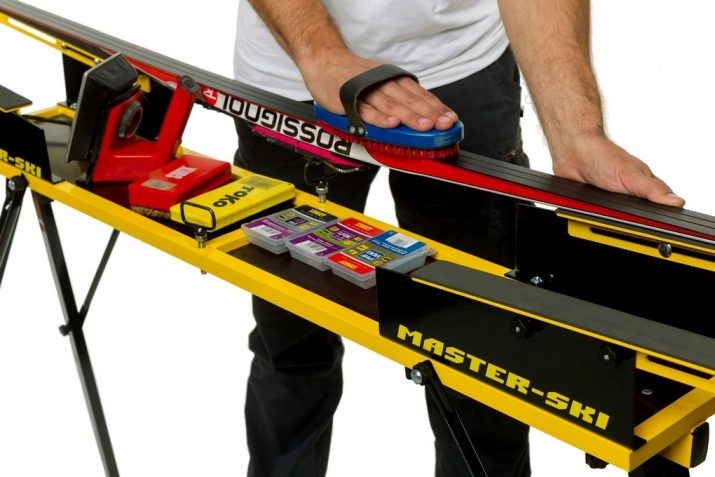
Apply ski wax or soft paraffin to the sliding surface at least 3 times per season. This lubrication allows the skis to glide better on the snow.
One should resort to "hot" lubrication once a winter. The sequence of actions is not very difficult.
Heat the iron, preferably an old model without Teflon coating. In this case, the temperature regime should be minimal.
Lay unnecessary newspapers on the floor, table or other horizontal surface and lay the ski on them so that the sliding surface is facing up.
Bring the paraffin wax carefully to the hot iron. Make sure that drops of molten paraffin fall on the surface to be treated in 5 cm increments.
It is important that the wax melts slowly. If you hear a characteristic crackling sound, then you need to lower the temperature of the iron.
Iron the work surface of the equipment quickly, redistributing the wax evenly.
Carefully scrape off excess paraffin with a scraper, or if it is not there, you can take a hard plastic plate with a pointed edge.
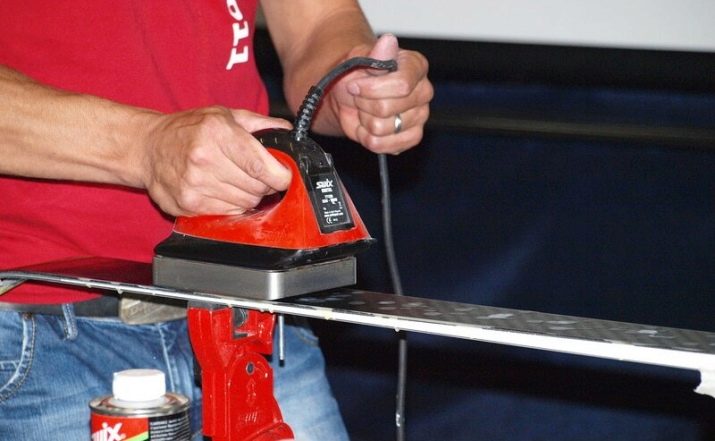
And, of course, do not forget to clean the iron in the end.








